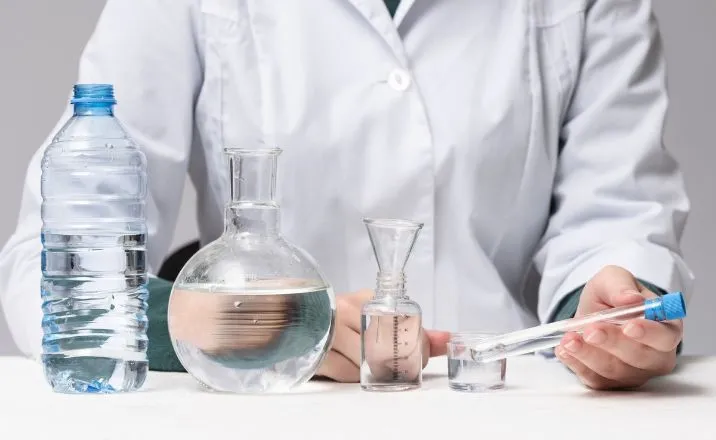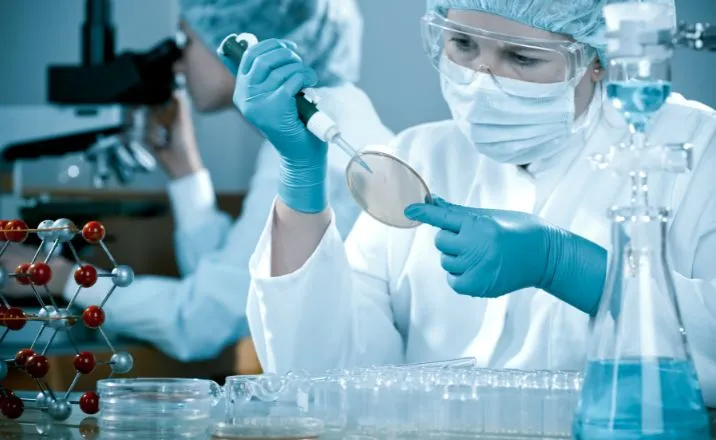Water Testing: Locate a Water Testing Laboratory Near You Today
Summary:
- This blog emphasizes the critical importance of water testing in safeguarding public health amid growing concerns over pollution and contamination.
- It highlights the comprehensive process of analyzing physical, chemical, and microbiological parameters to detect potential contaminants like bacteria, viruses, and heavy metals.
- By following standards set by regulatory bodies like the BIS, Envirocare Labs offer trusted solutions for assessing water quality and contributing to the safety of communities.

In our daily lives, water is the most essential resource. 75% of our Earth is covered by water but only about 0.007% of all water on Earth is accessible for human consumption. Water being essential for the survival of all living things, it has widespread usage with domestic, industrial & agricultural applications. The safety and quality of water cannot be taken for granted. With growing concerns over pollution, contamination, and deteriorating water infrastructure, ensuring access to safe and clean water has become a global challenge. Water testing is a fundamental tool in safeguarding public health amidst these challenges.
The Water Division of Envirocare Labs has comprehensive testing facilities for physical, chemical, microbiological, instrumental and pesticide-metal residue parameters.
What is Water Testing?
Water testing is a comprehensive process that involves the analysis of various physical, chemical, and microbiological parameters to evaluate its quality and safety. These parameters serve as indicators of potential contaminants, including bacteria, viruses, heavy metals, pesticides, and industrial chemicals, which can pose significant health risks if present above permissible levels.
Which parameters are involved in Water Testing?
- Physical Parameters: Physical characteristics such as colour, odour, taste, pH, total dissolved solids and turbidity are assessed to gauge the aesthetic quality of water and identify any visible impurities.
- Chemical Parameters: Chemical analysis involves measuring the concentrations of various substances dissolved in water, including dissolved oxygen, conductivity, and toxic substances such as arsenic, Cadmium, Chromium, Lead, Mercury, Nickel, Poly aromatic hydrocarbon (PAH), Polychlorinated biphenyls (PCB) and Uranium.
- Microbiological Parameters: Microbiological testing targets the detection of bacteria, viruses, and other microorganisms that indicate the presence of faecal contamination and the potential for waterborne diseases. Common indicators include total coliform bacteria, Escherichia coli (E. coli), and total plate count (TPC).
Why is Water Testing Important?
Water testing plays a crucial role in ensuring the safety and purity of our drinking water. Regularly monitoring water quality through routine testing is crucial for ensuring the safety of water sources.
- Protecting Public Health: Inadequate water quality can lead to various illnesses, including gastrointestinal infections, respiratory issues, and skin problems. Timely detection of contaminants ensures that appropriate measures can be implemented to safeguard public health and prevent water-related illnesses.
- Regulatory Compliance: Governments and regulatory agencies establish standards and guidelines for water quality to ensure the safety of drinking water supplies. Water testing is essential for regulatory compliance, as it provides data necessary for assessing compliance with established standards and implementing corrective actions when needed.
- Risk Management: Identifying potential contaminants and pollutants in water sources allows for proactive risk management strategies. Water testing helps identify sources of contamination and implement measures to mitigate risks and protect water quality.
Common Contaminants Found in Water
Water can contain a variety of contaminants, each with its own set of risks. Bacteria, such as E.coli and Salmonella, can cause severe gastrointestinal infections. Viruses like norovirus and hepatitis A can also be present in water and lead to illnesses. Heavy metals like lead and mercury are toxic and can cause developmental issues, organ damage, and neurological disorders. Pesticides and chemicals, such as chlorine and fluoride, can have adverse effects on our overall health when present in high concentrations. Understanding the common contaminants found in water is essential for choosing the appropriate testing methods.
Regulations in India
Bureau of Indian Standards (BIS): The BIS sets standards for drinking water quality in India through Indian Standard IS 10500:2012, packaged drinking water with IS 14543 standards, specifying permissible limits for various parameters. Compliance with these standards is essential for ensuring the safety of drinking water.
What is the process of water testing?
Water testing involves following steps to ensure accurate results.
1. Sample Collection: Samples are collected from various sources. Proper sampling techniques are crucial to minimize contamination and ensure representative samples.
2. Analysis: The lab analyzes the samples using appropriate testing methods. This may include microbiological analysis, chemical analysis, and physical measurements.
3. Interpretation: The lab interprets the test results by comparing them with established standards and guidelines. The results are then compiled into a comprehensive report for the customer.
Water Testing Services at Envirocare Labs
- Potability of Source, Purified Waters, Ice Cubes as per IS 10500
- Potability as per Food Safety & Standards Regulations 2011
- Suitability of water for Food Processing Industry as per IS 4251
- Conformance with Packaged Natural Mineral Water as per IS 13428 and Packaged Drinking Water as per IS 14543
- Conformance of Process Water as per Pharma, EU, and WHO Specifications
- Ground Water, Rain Water, Domestic Usage
- Sea Water
- Safety of Recreational Waters – Swimming Pools, Spas, and Jacuzzis as per IS 3328 and WHO Specifications
- Suitability of Water for Industrial Applications – Boiler, Cooling Tower, RO, Construction, Reagent Grade, Lab Grade, etc.
- Untreated and Treated Water as well as Waste Water
- Hospital and Clinic grade water – Purified water, Dialysis water, Endotoxin free water
How do you choose a water testing laboratory near you?
- Accreditation and Certification: Look for laboratories accredited under ISO/IEC 17025 by NABL (National Accreditation Board for Testing and Calibration Laboratories). This ensures adherence to standards in testing procedures.
- Scope of Testing: Evaluate the laboratory’s capacity to test for a broad spectrum of parameters encompassing physical, chemical, and microbiological aspects of water quality. Ensure the laboratory offers testing for specific contaminants relevant to your needs, such as heavy metals, pesticides, pathogens, and pH levels.
- Turnaround Time and Reporting: Inquire about the laboratory’s turnaround time for delivering test results.
Why Choose Envirocare Labs?
Envirocare Labs stands as a trusted partner in ensuring the safety and quality of water through its comprehensive testing services.
- Accreditation and Expertise: Envirocare Labs, accredited under ISO/IEC 17025:2017 by NABL, boasts 43+ years of industry leadership.
- State-of-the-Art Facilities: Our advanced labs are equipped with cutting-edge technology such as GC, GC-MS/MS, HPLC, LC-MS/MS, IC, ICP-MS, and ICP-OES, allowing us to conduct various tests.
- Regulatory Compliance: Envirocare Labs ensures regulatory compliance, including adherence to standards set by bodies like BIS, facilitating client confidence in navigating regulatory complexities.
- Comprehensive Solutions: Offering a wide range of testing services across various sectors, we provide unmatched versatility and precision, with over 20,000+ parameters accredited under our scope.







